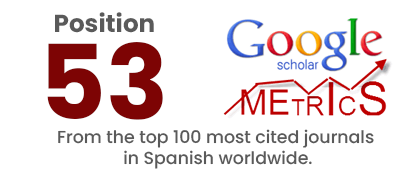Modern innovative technologies of teaching students
DOI:
https://doi.org/10.36097/rsan.v1i30.919Keywords:
innovative technology, interactive methods, competence-based approach, educational tasks, developingAbstract
The rapid development of innovative technologies has affected all spheres of modern society, including domestic higher education. The transition of universities to the implementation of the Federal state educational standard requires a significant adjustment of the system of training. This has determined the importance of changing the approaches to the educational-methodical and organizational-technical support of the educational process in higher education. New conditions dictate the need to modernize teaching methods and the transition to innovative technologies in education, significantly improving the quality of teaching, developing students ' ability to know a way around non-traditional, non-standard situations, to competently analyze the reality, to make the most favorable decisions, to work with a large flow of information and understand it well, to effectively solve problems. In addition, at the present stage of education development, it is important to search for such techniques and methods of teaching in higher education that would develop students’ general cultural and professional competence, develop critical and creative thinking, stimulate cognitive activity and independence, create conditions for student initiative, free exchange of views, opportunities to establish themselves, interact with both the teacher and each other. The article deals with the use of interactive technologies in higher school, which are associated with leading innovations in teaching methods and which involve the stimulation of cognitive activity and independence of students, contribute to the formation of their communication skills, the development of critical thinking, i.e. have great developmental and educational potential. The proposed methods of interactive learning can be used during lectures and seminars.
Downloads
References
Furst‐Bowe, J. A., & Bauer, R. A. (2007). Application of the Baldrige model for innovation in higher education. New directions for higher education, 2007(137), 5-14.
Bentley, T. (2006). Can we be more creative in thinking about how to scale up educational innovation?. Journal of Educational Change, 7(4), 339-344.
Issing, L. J., & Schaumburg, H. (2001). Educational technology as a key to educational innovation. TechTrends, 45(6), 23-28.
Cherkasov, M. N. (2012). Innovative methods of teaching of students. In Proceedings of the XIV intern. scientific-practical. conf.«Innovations in science (p. 124).
Gostev, A. N., & Semenova, V. G. (2014). Employment: Problems of Social Management // Science and Modernity: Collection of Articles of the International Scienсe and PracticeConference. – Ufa: RIO SAINZ OMEGA ICII, P. 308–314.
Semenova, V.G. (2018). The Use of Innovative Technologies and Methods of Teaching in Higher Education // Law and Education. No. 11. P. 51–59.
Novgorod, N. (2013). Active and Interactive Educational Technologies (Forms of Classes) in HigherEducation. 97 p.
Jenaabadi, H., & Khosropour, A. (2014). AN INVESTIGATION ON THE AMOUNT OF EMPLOYING TOTAL QUALITY MANAGEMENT PRINCIPLES BY SCHOOL PRINCIPALS AND ITS’CORRESPONDENCE WITH THEIR AFFECTIVITY. UCT Journal of Social Sciences and Humanities Research, 2(1).
Hadzhikurbanova G.M. (2013). The Method of Using the Case Method (Case Study) in the Educational Process of the University. Bulletin of the University. No. 9. P. 263–270.
Zharov S.N. (2018). Education in the perspective of innovation: lessons from the past and opportunities for the future. Bulletin of Voronezh state University. No. 4. P. 42-48.


















